Japan in 1987 saw hot competition between the Famicom and Sega Mark III. The same went for the American market with the NES and
Master System. On September 9, realizing that it was only a matter of time before their console would age, then-Nintendo
president Hiroshi Yamauchi formally announced the beginning of the Super Famicom's development. Like its predecessor, its
development was led by Masayuki Uemura. Days later, a price of ¥20,000 was announced. But the war heated up on October 30, when
electronic company NEC brought out their PC Engine. It was marketed as 16-bit to boast that it's more state-of-the-art than the
competition, when in reality it ran on an 8-bit CPU and 16-bit graphics chip. Still, it never really garnered as much ground as
its opponents would. It wasn't until August 30 the next year that the first handful of games for the Super Famicom were revealed,
including Super Mario Bros. 4 (subtitle for Super Mario World), Dragon Quest V, Zelda 3, and two others. Back on the Famicom, on
October 23, 1988, Nintendo released their biggest game yet, Super Mario Bros. 3. Not only was it a massive success that
bolstered sales of the 8-bit console, it dealt a sizable blow to the Mega Drive six days before it could come out!
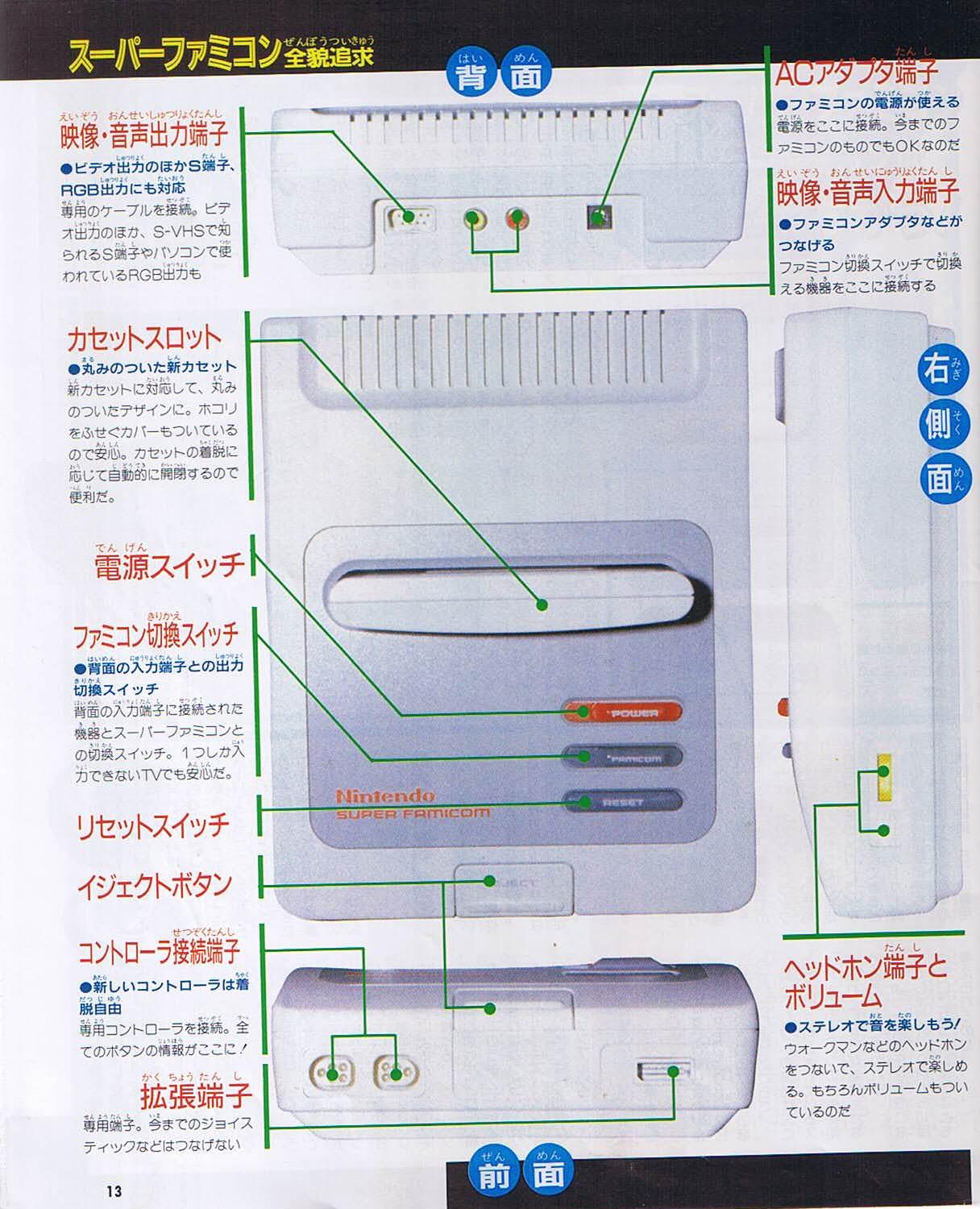
About a month later on November 21, a working prototype of the Super Famicom was demonstrated to the press, with a slated
release of July 1989. It had a reset button, power switch, and a mysterious "FAMICOM" switch whose supposed function you can
read about
here.
---Things that happened since 11/21/88---

Then came July 28, 1989, when Nintendo showcased a second, nearly complete prototype of the Super Famicom and gave a new release
date of "a year later at the earliest". The delay was due to semiconductor shortages, also why the price was raised to ¥25,000.
The overall appearance has been finalized, except for a couple of residual differences from the release: The power switch was
still red and in its final shape.
In August, starting with the Genesis and TurboGrafx-16 releasing within two weeks of each other, the three-front war arrived in
the United States. With how successful Super Mario Bros. 3 was in Japan, and the excitement the game brought to Americans in the
movie The Wizard in December, the game was a smash hit when they released it in February 1990. This was an obvious but brilliant
move because this bought Nintendo more time to finish development on the Super Famicom.
Fast forward later in 1990, when Nintendo unveiled one more prototype to the press. The headphone jack was removed and the
controller ports were moved the right, eliminating the external port.
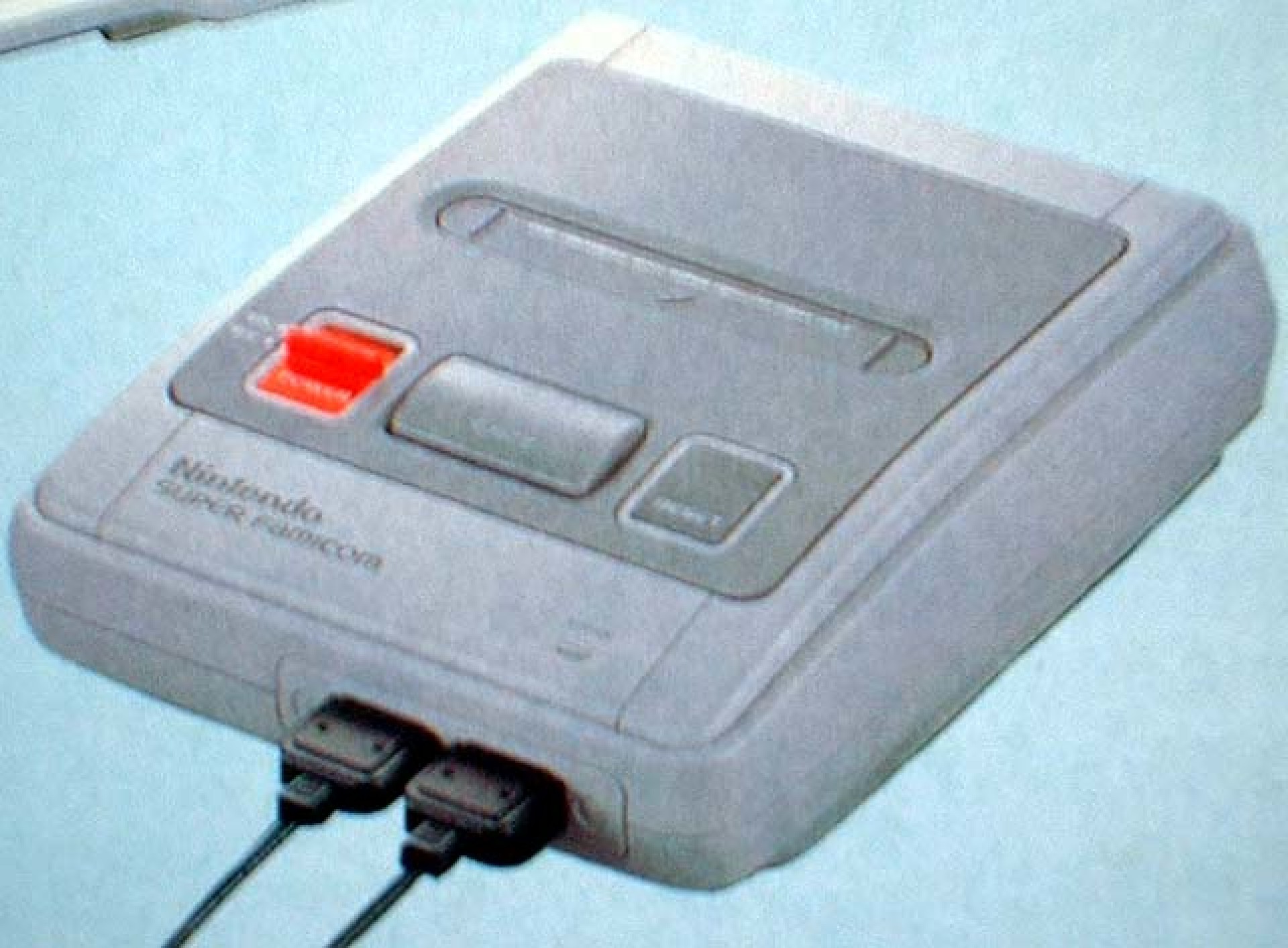
In the end, the Super Famicom was released on November 21, 1990, precisely two years after the first prototype was shown to the
public. Its first shipment of 300,000 units sold out within hours, prompting the government to ask that all game manufacturers
release consoles during weekends in the future because of the massive rush and lines causing disturbances to traffic.
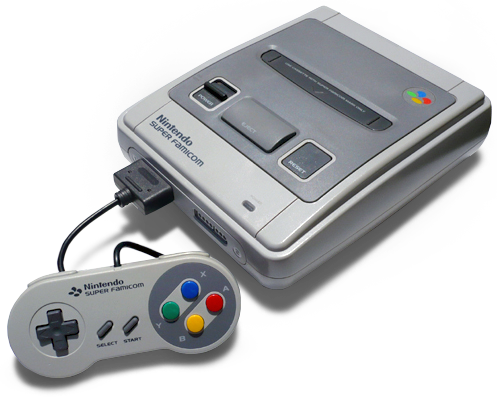

Lance Barr, designer of the NES, also designed the Super Nintendo. He drew up some concept designs, some of which showed an
eject "handle" instead of a button. Notice that it was called "Nintendo Entertainment System 2".
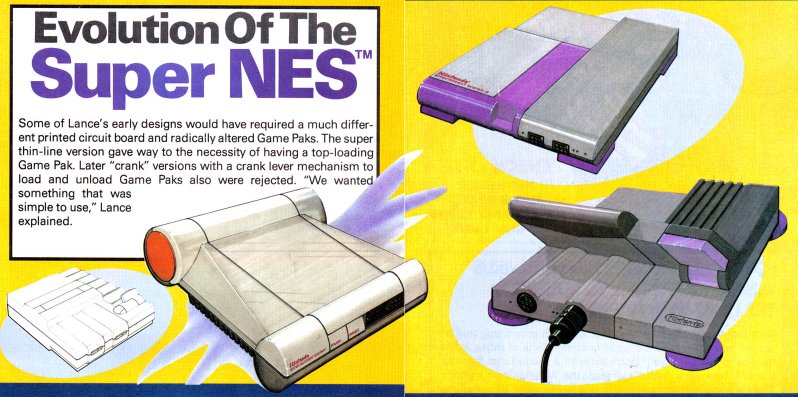
In a 1991 issue of Nintendo Power, the new Super Nintendo was shown. The controller ports faced inward rather than outward and
there are no dots next to each to indicate Player 1 and 2. Mysteriously, the eject and reset labels were switched. It may be an
error by the magazine, unless the eject mechanism was once built with the rightmost switch in mind. The center button was
originally colored to match the switches, until the final turned it gray. The "Super Nintendo Entertainment System" logo is
pretty different. In fact, the cursive-style "Super" resembles that of Super Game Boy adapter's logo, released in 1994.

The Nintendo VS. Sega Peak Arrives
Ultimately, the Super Nintendo reached America on August 23, 1991 with a price of $199. Unlike the Super Famicom's launch in
Japan with two, the American version featured launch titles including F-Zero, Pilotwings, SimCity, and Gradius III. Also unlike
the Japanese release, the Super Nintendo came bundled with Super Mario World. Needless to say, this game was the best-selling
for the console. It's notable for absolutely heating up the console wars between Sega and Nintendo that started with the Mark
III and Famicom in Japan and crossed into America with the Master System and NES. Since Nintendo's 16-bit console came out over
two years after Sega's in Japan and America, it took a while for the SNES's sales to catch up to the Genesis, but Nintendo
eventually prevailed.
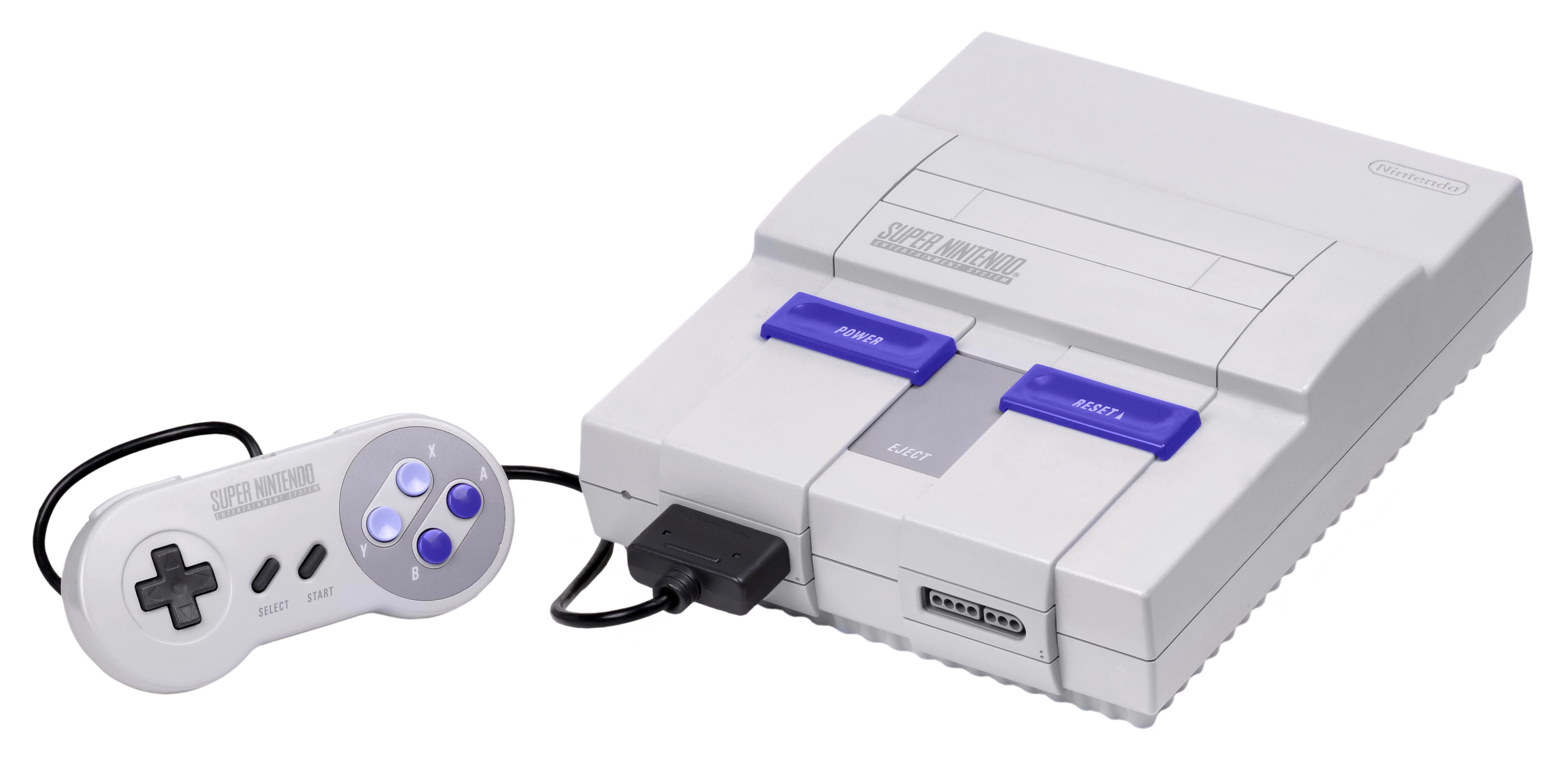
In 1997, Nintendo released a smaller version of the main console, just as they did with the 8-bit system.
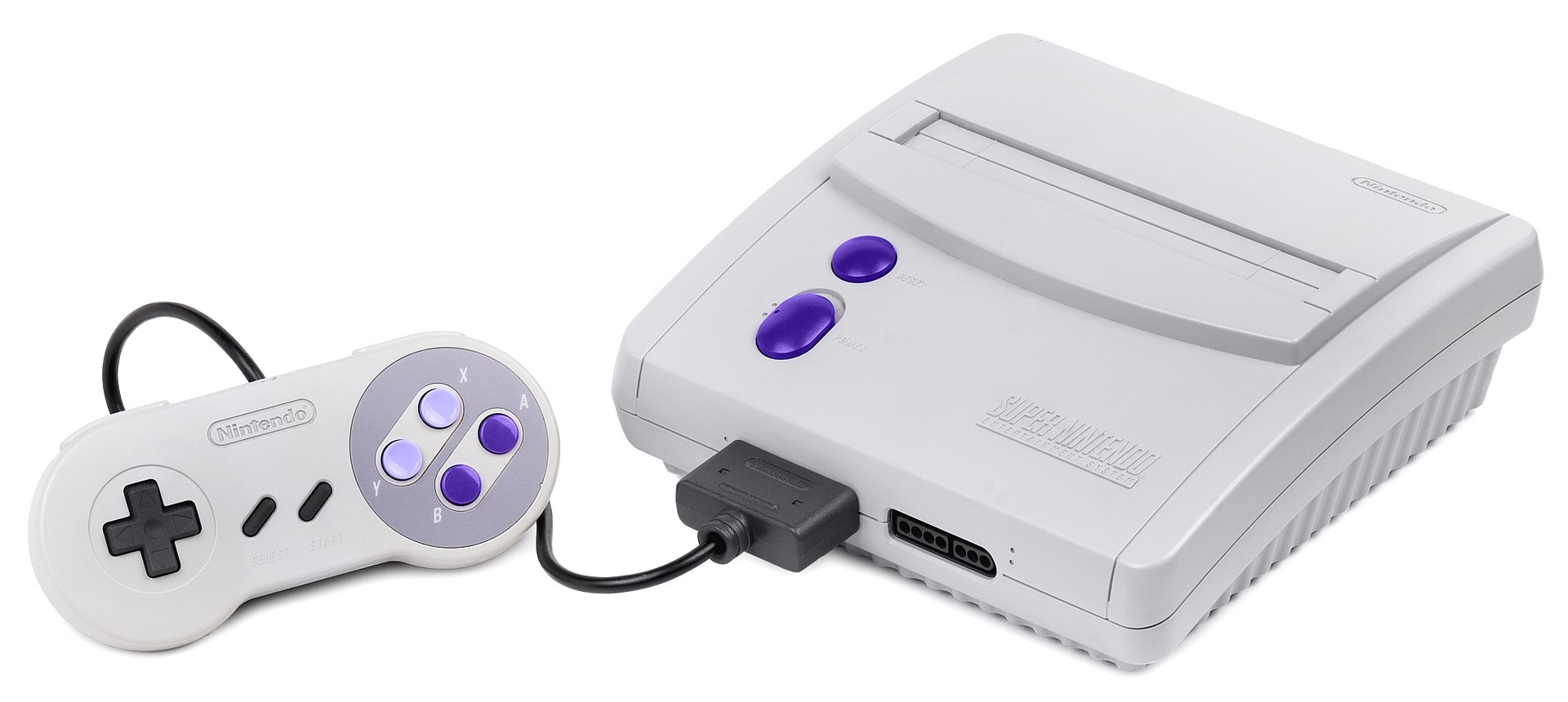
The Dynamic Demise
The Super Nintendo was first discontinued in 1996 in the Soviet Union and 1998 in Europe, with sales totaling 8,600,000 units.
This makes some sense as it was just not as successful in those regions. Later, in 1999, the Super Nintendo was discontinued in
the US, where it sold the most units at 23,000,000. But Japan kept running it and the original Famicom ragged all the way until
2003, and it was in solid second-place, selling 17,000,000 consoles. It's very important to look back on in comparison to other
consoles by then for two reasons:
First, the rise in violent, lewd, and otherwise questionable content found in video games "supposedly" meant for children,
causing concern among parents and politicians. Without getting to deep into it here, the ESRB was created so parents knew what
kind of games would be best suited for their children to play, just like with movies. Starting with its NES, Nintendo did take
the liberty of having developers making games or localizing existing ones censor or remove anything that might not be suitable
for children to see, including blood, nudity, foul language, etc. through their licensing policies. But in short, the ESRB took
a more fair and powerful approach and changed the landscape of gaming as we knew it.
Second, the generation's role in bringing gaming into the third dimension. Consoles such as the Atari Jaguar and Panasonic 3DO,
although far less successful than the Super Nintendo, had a lot of games that were presented with 3D graphics. Those systems
didn't catch on because of the high price, false advertising, and low-quality game selection. The 16-bit Super Nintendo used
special chips such as the Super FX and Mode 7 chips that provide high-quality 3D game experiences while still being affordable
and fun to play, which also plays into its enduring success of Sega, who was beginning to lose confidence in the console market
at this point.









